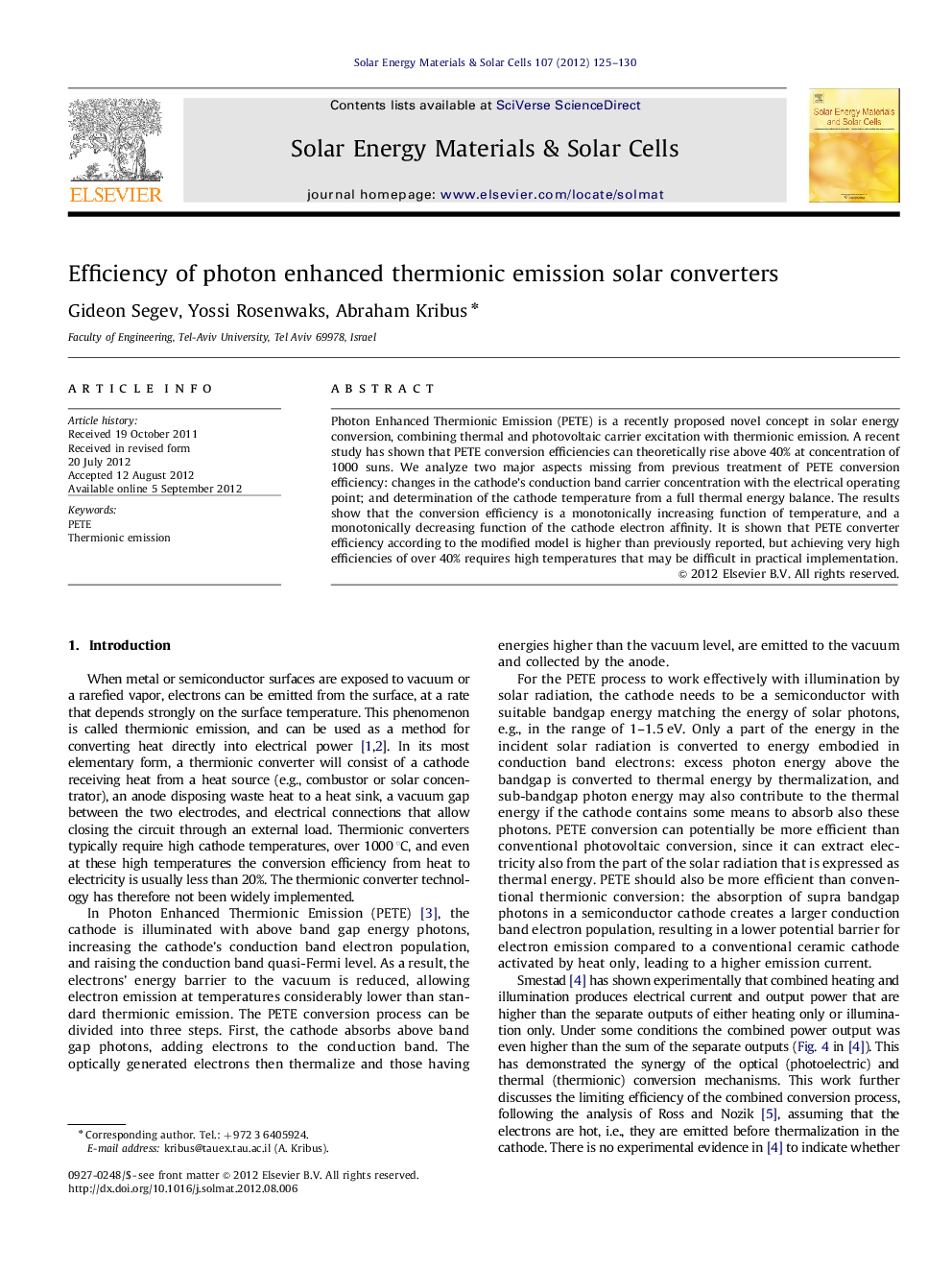| Article ID | Journal | Published Year | Pages | File Type |
|---|---|---|---|---|
| 78899 | Solar Energy Materials and Solar Cells | 2012 | 6 Pages |
Photon Enhanced Thermionic Emission (PETE) is a recently proposed novel concept in solar energy conversion, combining thermal and photovoltaic carrier excitation with thermionic emission. A recent study has shown that PETE conversion efficiencies can theoretically rise above 40% at concentration of 1000 suns. We analyze two major aspects missing from previous treatment of PETE conversion efficiency: changes in the cathode's conduction band carrier concentration with the electrical operating point; and determination of the cathode temperature from a full thermal energy balance. The results show that the conversion efficiency is a monotonically increasing function of temperature, and a monotonically decreasing function of the cathode electron affinity. It is shown that PETE converter efficiency according to the modified model is higher than previously reported, but achieving very high efficiencies of over 40% requires high temperatures that may be difficult in practical implementation.
Graphical abstractFigure optionsDownload full-size imageDownload as PowerPoint slideHighlights► Accounting for variable electron concentration affects the efficiency of a PETE converter. ► Efficiency increases monotonically with temperature, and decreases monotonically with electron affinity. ► Cathode temperature is determined by incident flux and electrical working point. ► Efficiency over 40% is possible but requires high cathode temperature.
